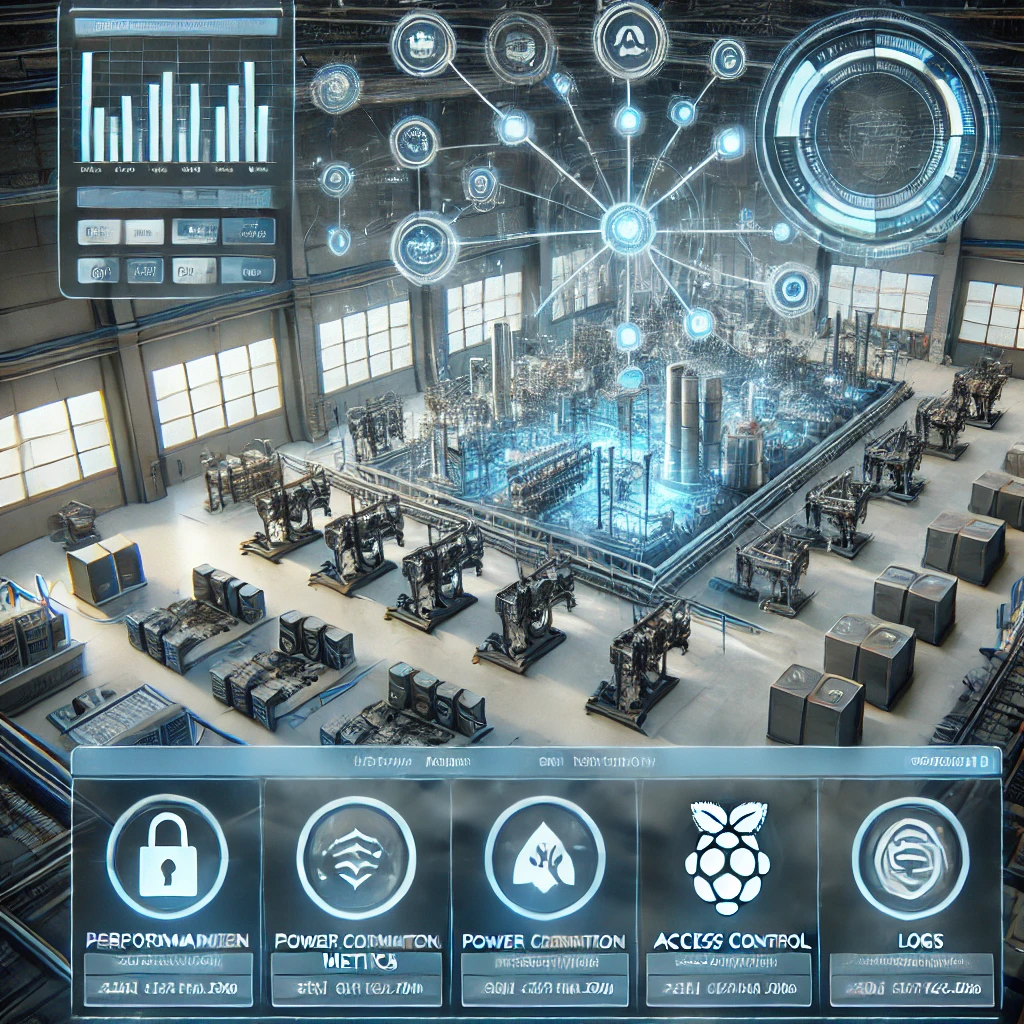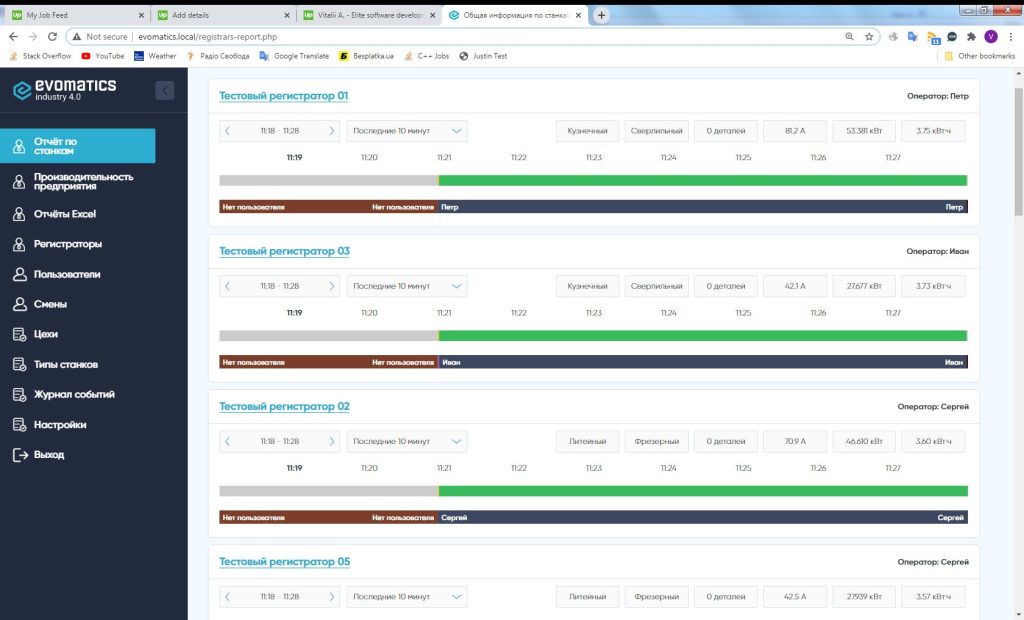We created a factory equipment monitoring system that provides real-time insights into machine performance, power consumption, and access control.
Smart Factory Monitoring: A Complete IoT Solution by GoodGuySoft
We created a factory equipment monitoring system that provides real-time insights into machine performance, power consumption, and access control.

Technologies Used
- C++ (
libcurl,boost::asio) – Developed a high-performance TCP/IP server for real-time sensor communication. - MySQL Server – Used for structured data storage, historical retrieval, and real-time queries.
- PHP (Custom Web Interface) – Built a user-friendly dashboard for live monitoring, reporting, and role-based access control.
- Raspberry Pi – Deployed as IoT sensors to collect machine performance data, power usage, and access logs.
- TCP/IP Communication – Ensured low-latency and secure data transmission between factory equipment and the monitoring server.
- Cross-Platform Support – The C++ backend was designed to run on both Linux and Windows environments.
At GoodGuySoft, we specialize in developing cutting-edge industrial automation solutions. One of our recent projects involved creating a factory equipment monitoring system that provides real-time insights into machine performance, power consumption, and access control. This project combined IoT hardware, high-performance C++ networking, data storage, and a web-based dashboard to offer a comprehensive monitoring solution.
System Architecture
The solution was designed to be scalable, portable, and reliable, integrating the following components:
1. Raspberry Pi-Based IoT Sensors
We deployed Raspberry Pi-based sensors across the factory floor to collect vital equipment data, including:
- Electricity consumption – Real-time power usage monitoring.
- Productivity tracking – Measuring machine uptime and efficiency.
- Access control – Logging operator interactions with factory equipment.
- Additional parameters – Other critical factory metrics based on client requirements.
These sensors continuously transmitted data to a centralized server via TCP/IP.
2. High-Performance C++ Server
To efficiently process and manage the data flow from the sensors, we developed a custom C++ TCP/IP server using boost.asio. Key features of this server include:
- Cross-platform support – Runs on both Linux and Windows.
- Real-time data processing – Aggregating and filtering sensor inputs before storage.
- Optimized networking – Ensuring low latency and reliable communication with hundreds of devices.
- Secure communication – Encrypted data transmission to prevent unauthorized access.
3. MySQL Database for Data Storage
After preprocessing, the data was stored in a MySQL database. This structured storage allowed for:
- Efficient historical data retrieval for long-term analysis.
- Real-time query execution to power the web interface.
- Data integrity and redundancy to prevent loss of critical information.
4. PHP-Based Web Dashboard
The final component was a user-friendly web interface developed in PHP. This dashboard provided:
- Live and historical data visualization.
- Customizable reports and alerts.
- Role-based access control for different user levels.
Below is a screenshot of the web interface:

Impact and Results
This IoT-driven monitoring system provided factory operators with a real-time overview of their equipment, enabling:
- Improved operational efficiency through detailed performance insights.
- Reduced energy consumption by identifying power-hungry machines.
- Enhanced security and access control with logging mechanisms.
- Predictive maintenance planning based on equipment usage trends.
Conclusion
This project demonstrated GoodGuySoft’s ability to merge IoT hardware, high-performance networking, and web-based visualization into a robust industrial monitoring solution. By combining Raspberry Pi sensors, a scalable C++ backend, a MySQL database, and an interactive PHP front end, we delivered a fully integrated factory automation system.
For more innovative industrial automation solutions, stay connected with GoodGuySoft!
